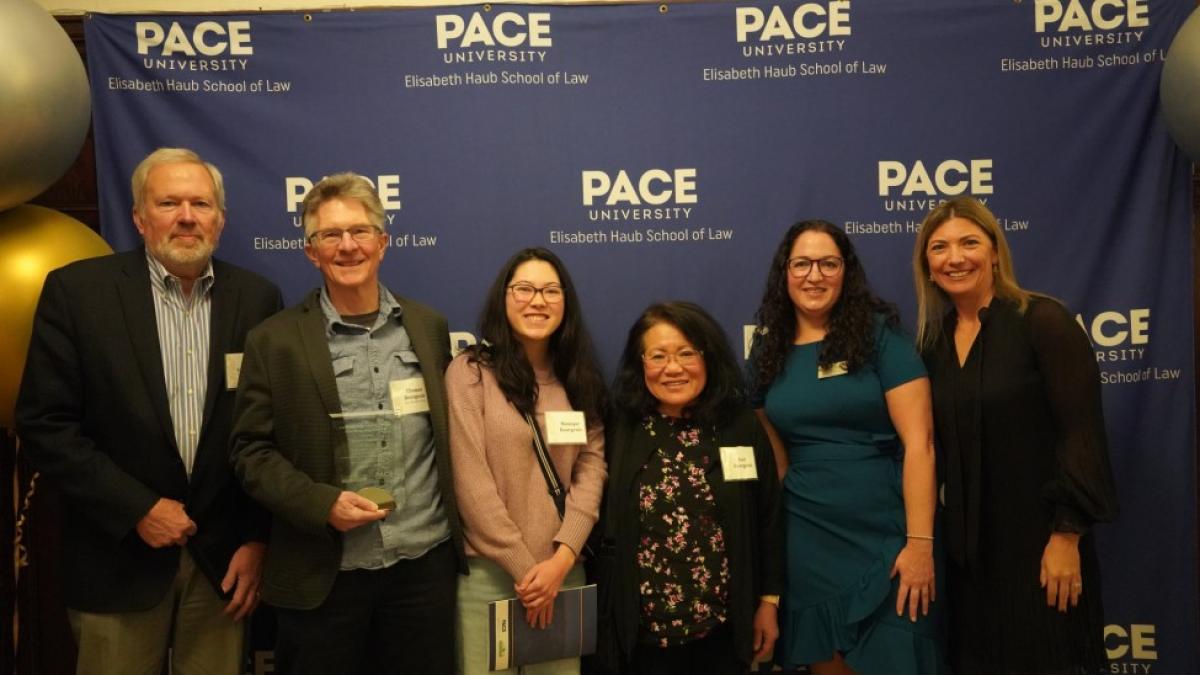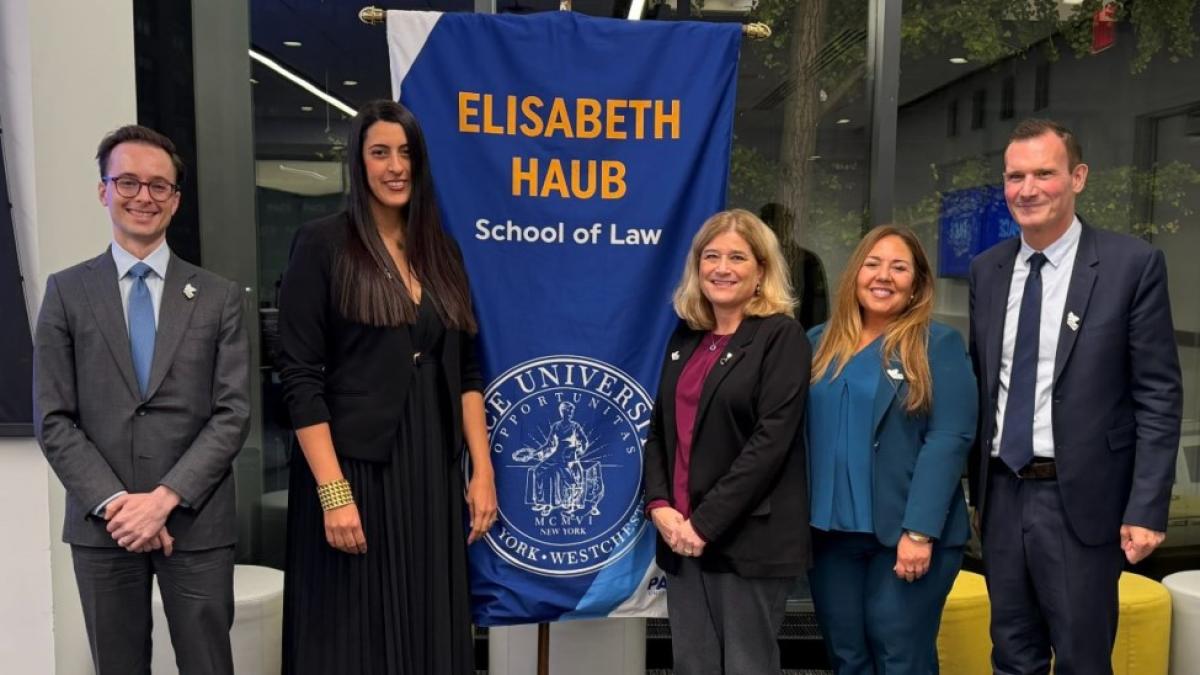The Elisabeth Haub School of Law at Pace University’s Land Use Law Center recently hosted the 24th Annual Alfred B. DelBello Land Use and Sustainable Development Conference, continuing its long-standing tradition of convening leaders in land use, environmental law, and public policy to address the challenges and opportunities facing communities today.
Testimony On The Impact Of COVID-19 On The Delivery Of Health Care And The Health Care Workforce
By Rhonda Maneval, EdD, RN
Pace University
November 17, 2021
Thank you Chairman Gottfried, Chairwoman Glick, Chairwoman Joyner, and committee members for this opportunity to speak with you about the critical nursing and nursing faculty shortages that have been exacerbated by COVID-19, its impact on quality patient care, and opportunities to help alleviate the problem. My name is Rhonda Maneval and I am a professor of nursing and serve as the Vice Dean for the College of Health Professions and the Lienhard School of Nursing at Pace University. My career as a nurse spans over 35 years and includes working in acute care hospitals, teaching nursing students, and leading nursing programs. Our goal at Pace is to be at the forefront of creating opportunity for our highly diverse student body. With campuses in Lower Manhattan and Westchester, we are leaders in healthcare education, practice, and scholarship offering degrees in Nursing, Physician Assistant, Occupational Therapy, Speech/Language Pathology, Health Science, and Nutrition.
I. Introduction
According to the NYSDOH by 2030 there is a projected shortage of more than 39,000 registered nurses (RN) in New York. This report was released in August 2020, prior to the pandemic; we know that the pandemic has accelerated the exit of nurses near retirement age, and many have left or are planning on leaving the bedside or changed careers as a result of stress and burnout. On September 1, 2021 the American Nurses' Association called for the Department of Health and Human Services to declare a national nurse staffing crisis. Nurses provide 90% of all care to patients in hospitals. Images from the pandemic brought the work of nurses into the spotlight – nurses were rightly deemed heroes – and in fact, they and other healthcare providers worked at great risk to their own health and that of their families. At Pace, at the height of the pandemic, a Family Nurse Practitioner who served as a preceptor for our students for many years died in an ICU bed on a ventilator after contracting COVID-19; she was 59 years old. Members of our nursing faculty became ill with COVID-19; and two are now “long haulers” – continuing to experience severe after effects of the disease on their health. Three of our most seasoned faculty decided to retire earlier than originally planned due to the pandemic – leaving an “experience gap” that impacts the school and our students.
II. Supporting Nursing Students and Faculty
Over the past few months, I have met with numerous chief nursing officers from NYC and Westchester County healthcare agencies, all of whom voiced deep concern about current and pending severe staffing shortages. These meetings focused on ways our school could provide more practice-ready graduates.
The good news is that, despite the pandemic, or because of it, people want to become nurses. We have worked diligently to increase enrollments in our pre-licensure RN and graduate nursing programs to attempt to keep up with student and employer demand. However we, like many other schools of nursing in NYS and nationally, are limited by our ability to expand further due to a lack of classroom and laboratory space, lack of clinical placements, and lack of qualified faculty. We cannot accept more students, no matter how qualified, if we cannot deliver on our promise of a high quality education. The American Association of Colleges of Nursing (AACN) reported that over 80,000 qualified applicants were turned away by member schools. I believe, Schools of Nursing need long-term investments if we are to expand enrollments to meet NYS nursing workforce demands. This includes expanding options for clinical placements, loan forgiveness for nursing graduates who want to teach, infrastructure support to expand facilities, and tax incentives for preceptors and for nurses with graduate degrees and retired nurses to become nursing faculty. Today I want to focus on two strategies—expanding the use of simulation and incentivizing healthcare professionals to serve as preceptors and to become faculty.
III. Value of Simulation Highlighted During Pandemic
The COVID-19 pandemic caused many nursing schools and health professions’ programs to cancel direct care clinical experiences and students moved to virtual learning. In 2020, at the height of the pandemic, NYSED permitted clinical programs to pivot to remote learning. This was critical to keeping programs open. Classes quickly adjusted from in-person to remote learning formats. Faculty faced steep learning curves and had concerns regarding the effectiveness and sufficiency of remote learning to prepare students for clinical practice. What we learned early on, was that high quality virtual reality simulation and telehealth visits were very effective alternatives. Later, when clinical sites were still not open to students, but our laboratories reopened – intensive simulation experiences proved highly effective and allowed faculty to objectively measure student competency prior to graduation.
What we learned during this time has the potential to help us create new strategies to address a major roadblock to increasing enrollment in nursing programs – a lack of clinical placement opportunities. I want to be clear – direct patient care experiences are essential to educating the nursing workforce – but simulation can help us in ways that actually improve overall clinical education. Often students are not permitted to do even basic procedures on patients – giving IV medications, documenting in the medical record, drawing blood, or the opportunity to make clinical decisions. By placing students in simulated patient care situations, students can perform the entire range of nursing activities under the direction of faculty. The simulations build confidence in our students while they are being evaluated on competency.
We urge NYSED to permit Schools of Nursing to allow simulation hours to count towards required program clinical hours, as laid out in S.6717 / A.7767. This would expand clinical experience capacity while providing meaningful learning experiences, without sacrificing quality. It would also help ease the bottleneck created by a lack of clinical spots, especially for nursing students.
IV. Increasing the numbers of Preceptors and Faculty
In addition to expanding the use of simulations, we must work on other fronts to address the need for more preceptors and faculty to increase the pipeline of nurses and other health care professionals.
Pre-licensure baccalaureate nursing programs, nurse practitioner and physician assistant programs all rely on preceptors to provide hands-on patient care experiences for students. Our ability to educate more providers is hampered due to a decline in professionals willing to precept students. Though some schools have resorted to paying providers to take students, this unnecessarily drives up the cost of programs, and that cost is passed onto students. Prohibitive costs dissuade prospective students and further exacerbates the shortage of providers. The Clinical Preceptor Tax Credit Act, as laid out in S4229 / A285, will incentivize experienced providers to precept health professions’ students, allowing for expansion of enrollment in these programs.
We also need strategies to address the shortage of faculty. Without more faculty we cannot effectively produce enough graduates. Loan forgiveness programs for nurses who want to teach, scholarships for nurses to return for graduate education, and tax incentives for nurses and retired nurses to join nursing school faculty are all possible strategies.
In closing, I am immensely proud of our faculty, students, and graduates who have persevered through this unprecedented and difficult time. We now have an opportunity to take what we have learned and create a new strategy moving forward to ensure a healthy pipeline of healthcare providers for NYS. The goal is universal – healthy communities for a healthy NY.
Thank you again for the opportunity to speak with you today and I will be happy to answer any questions.


